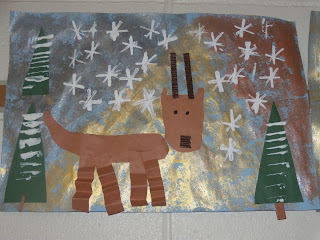3rd graders watched a video of
underwater sea creatures. They used their art eyes to observe all the colors,
shapes, patterns, and different species that were shown in the ocean. We
discussed how fish can have multiple colors. For their project they made their own paper using
tissue paper and paper mache glue. They choose 2 or 3 colors for their fish,
and added a little bit of tinfoil for some shine.
They folded their papers in half and drew half
their fish on the fold. Once cut and they opened it up, they had a symmetrical
fish. They created the scales by folding their fish in half again, and cut just
a little bit. Then they bent out every other fold.
They turned out beautiful‼! This has been my favorite project so far this year!
(*Lesson taken from A Faithful Attempt Blog*)
































